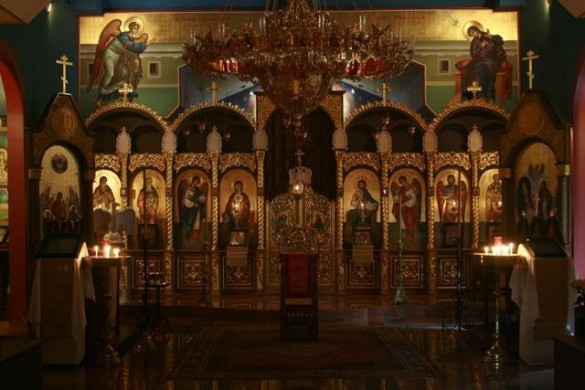Iconsostasis
The interior of Eastern Orthodox churches is dominated by the beautiful icon screen at the front of the church.
The iconostasis draws
the viewer's attention to the holiest part of the church just as the attention of the mind should be passing from
earthly things to the heavenly.

The early Christian churches were patterned on the Jewish Temple which separated the main area from
the Holy of Holies (originally the Ark of the Covenant) by a large curtain or veil. A chancel screen, actually a low wall with columns and a central door, was utilized to separate the nave of the church from the sanctuary area.
In the West, the altar rail in the traditional Latin Churches served a similar function.
After the iconoclast heresy of the 8th/9th centuries passed, icons were placed on the screen in greater numbers as time passed. Since icons are 'windows to heaven' it is appropriate that they adorn the area where
heaven itself touches earth in the Divine Liturgy.
The iconostasis varies in structure and style. Some are made of wood
while others are adorned with gold. Some have icons mounted on a
screen which allow the worshipper to see through into the sanctuary area,
while those of the Russian style are in effect a
completely solid wall with only the doors providing an opening. The order of the icons and doors is more uniform as the next page will illustrate.


|